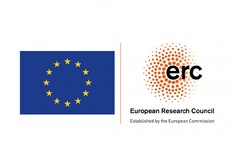Predictive memory systems across the human lifespan (PIVOTAL)
Predictive memory systems across the human lifespan (PIVOTAL)
ERC-Starting Grant (02/2018–01/2023)
This project has received funding from the European Research Council (ERC) under the European Union’s Horizon 2020 research and innovation programme (grant agreement No. [758898-PIVOTAL]).
As neuroscientific findings on brain functions accumulate, it is increasingly important to derive a set of overarching general principles about how the human brain works. For this, the predictive processing framework emerges as a promising route, with the notion that the brain operates as a prediction machine; internal models in the brain predict future states against which incoming information of new experience is compared.
This conceptual framework leads to three essential empirical questions that PIVOTAL will tackle: (1) What is the nature of the internal models on which predictions are generated (2) How do our actual experiences shape them? (3) How do prediction processes play out in human brains that are inherently diverse due to changes such as those caused by maturation and senescence. Addressing these issues is important for advancing our basic understanding of the neurocognitive architectures that enable the brain to perform adaptively in our environment, with predictive processing as a fundamental operation.
PIVOTAL integrates three separate strands of cognitive neuroscience research on predictive coding, memory systems, and lifespan development. By using functional magnetic resonance imaging (fMRI) in experimental research designs, we aim to unravel the cognitive and neural mechanisms that underlie predictive processing based on individuals’ memory of prior experience (episodic memory) and well-learned knowledge about the world (semantic memory). These mechanisms are systematically examined in samples of children, younger adults, and older adults, who differ from each other in important ways due to divergence in developmental orientation (progression vs. conservation) and neurocognitive landscape (structural and functional integrity of memory neural circuits). By explicating a more dynamic version of the predictive brain principle, we can start addressing issues related to the emergence of disorders at particular time windows in life.
(1) What is the nature of the internal models on which predictions are generated?
Our latest results have revealed that a key aspect of these internal models is that they carry information about our time-distant memories. Moreover, we have also shown that this time-distant (i.e., mnemonic) information co-exists with information from our current environment. It is the integration of these distinct pieces of information that render our meaningful experience of the world (see (https://www.biorxiv.org/content/10.1101/2021.06.16.448735v1) for more details).
These findings provide important insights into the neural mechanisms by which our prior experience influences our (visual) interpretation of the world and opens up new promising avenues exploring this implementation. For instance, we are currently working on a new study in collaboration with the Max-Planck Institute for Cognition and Brain Science in Leipzig, aiming at characterizing how different sources of prediction are represented in the different cortical layers by using high field 7 Tesla MRI scanner.
(2) How do prediction processes play out in developing and aging brains?
Due to the current demographic change, fundamental research on healthy aging becomes more and more important. As society ages, the number of cognition-related complaints and illnesses rises respectively and makes it essential to investigate brain functions also in higher age range. The prediction processes targeted by PIVOTAL, being core to human cognition, are also very likely to be affected in the elderly. However, not much research has been carried out on this matter. In an ongoing study, we are examining age-related differences in the use of internal models for generating visual predictions. We are particularly interested in testing whether the phenomenon of neural dedifferentiation, namely the less selective activation pattern often observed in old age, can also be observed in predictive processing.
(3) How does prediction error shape our memories?
In order to understand the world around us and to predict upcoming events, our brain is sensitive to regularities in the environment. These regularities can affect individual events that typically follow each other, but also event categories that can be bound together or separated in memory. When one encounters a familiar event, a prediction can usually be made about the next event that would follow. But what happens when prediction is not matched, that is, one experiences a prediction error? In a series of experiments, combining behavioral and electroencephalogram methods, we are investigating the impact of prediction errors on the memory of previously remembered event sequences that no longer hold up against the newly observed events.
One of the key results we found is that our memories are updated in the presence of uncertainty more than when faced with a very predictable context. Importantly, this is the case even when the events found in the predictable context are not expected. These findings highlight the importance of considering the prior state of the internal model when studying how memories are formed. See more details in our preprint (https://psyarxiv.com/8dwb3).





